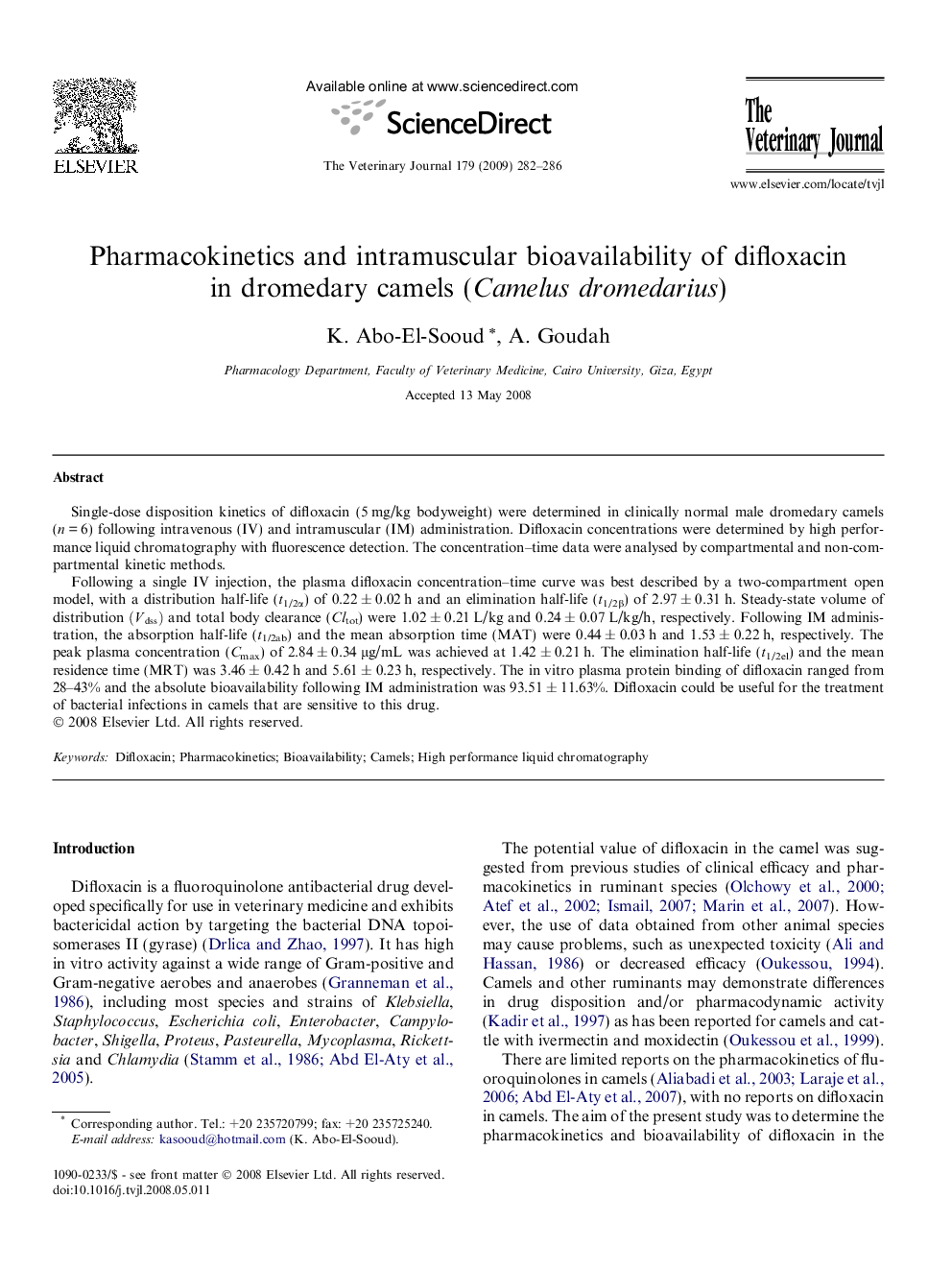| Article ID | Journal | Published Year | Pages | File Type |
|---|---|---|---|---|
| 2465711 | The Veterinary Journal | 2009 | 5 Pages |
Single-dose disposition kinetics of difloxacin (5 mg/kg bodyweight) were determined in clinically normal male dromedary camels (n = 6) following intravenous (IV) and intramuscular (IM) administration. Difloxacin concentrations were determined by high performance liquid chromatography with fluorescence detection. The concentration–time data were analysed by compartmental and non-compartmental kinetic methods.Following a single IV injection, the plasma difloxacin concentration–time curve was best described by a two-compartment open model, with a distribution half-life (t1/2α) of 0.22 ± 0.02 h and an elimination half-life (t1/2β) of 2.97 ± 0.31 h. Steady-state volume of distribution (Vdss)(Vdss) and total body clearance (Cltot) were 1.02 ± 0.21 L/kg and 0.24 ± 0.07 L/kg/h, respectively. Following IM administration, the absorption half-life (t1/2ab) and the mean absorption time (MAT) were 0.44 ± 0.03 h and 1.53 ± 0.22 h, respectively. The peak plasma concentration (Cmax) of 2.84 ± 0.34 μg/mL was achieved at 1.42 ± 0.21 h. The elimination half-life (t1/2el) and the mean residence time (MRT) was 3.46 ± 0.42 h and 5.61 ± 0.23 h, respectively. The in vitro plasma protein binding of difloxacin ranged from 28–43% and the absolute bioavailability following IM administration was 93.51 ± 11.63%. Difloxacin could be useful for the treatment of bacterial infections in camels that are sensitive to this drug.
